Cologne Cathedral, or Kölner Dom, is the magnificent phoenix that rose from the smouldering embers of World War II. This is Germany’s greatest Gothic cathedral and one of Europe’s most popular tourist attractions, drawing 6 million visitors annually.
Make the most of your visit with my favourite Cologne Cathedral facts, from the bones of the Magi to the Madonna of Milan.
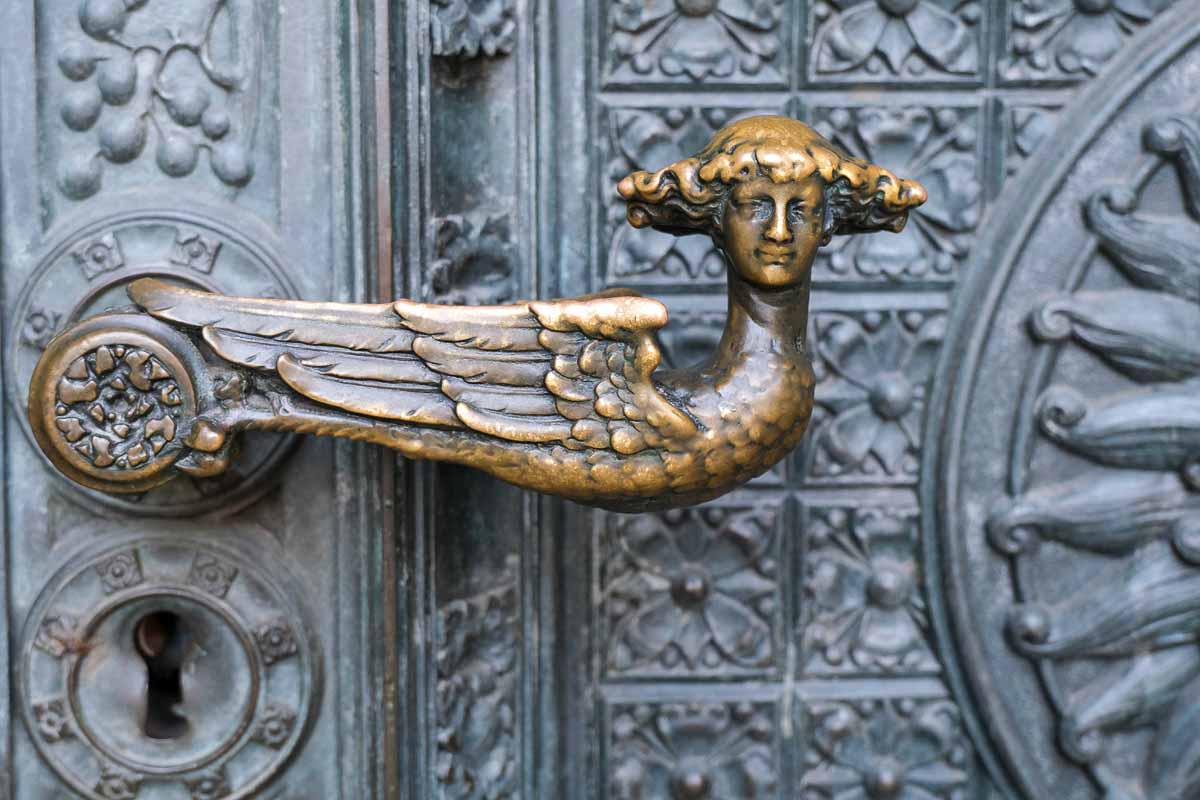
As a masterpiece of Gothic architecture, Cologne Cathedral is unmissable
Due to its proximity to the train station, it’s easy to visit Cologne Cathedral even if you are just passing through the city. Simply deposit your luggage in one of the secure lockers in the railway station, and spend a few hours exploring the cathedral and Cologne’s other highlights before jumping on your next train.
If you are in town for longer, check out my guide to exploring Cologne Old Town.
Cologne Cathedral facts to know before you go
1. Cologne Cathedral took more than 600 years to build
Like many other great European churches, Kölner Dom was a long time in the making.
Work began on Cologne Cathedral in 1248 and it was one of the most ambitious building projects of the Middle Ages. Inaugurated in 1322, the choir is the oldest part of the church.
Thanks to the turbulent years of the Reformation, Catholic pilgrims stopped visiting Cologne Cathedral and the coffers ran dry. It wasn’t until 1880 that the cathedral was completed with the erection of its twin towers.
As it was faithful to the original plans, it is considered a Gothic church, as opposed to Neo-Gothic.
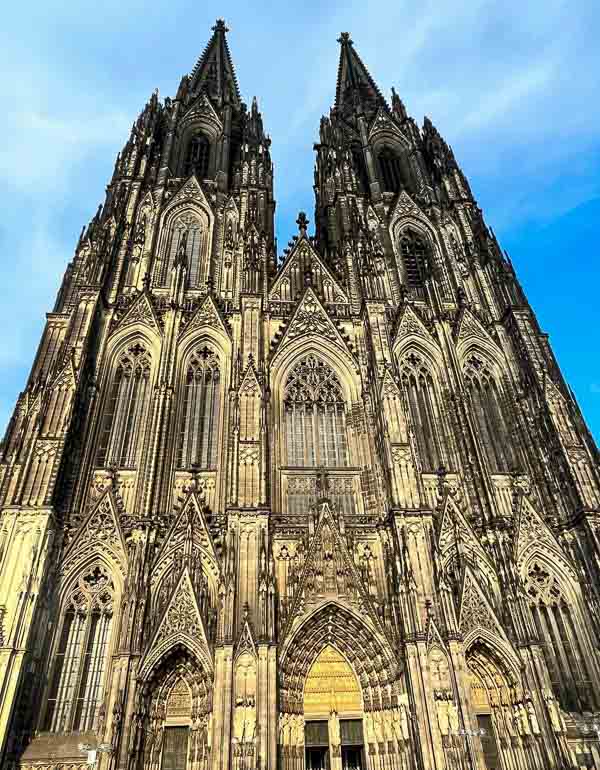
2. It survived the bombing raids of World War II
Cologne was pummelled during the Second World War. 95 per cent of the city was destroyed, its core bombed out.
Miraculously, Cologne Cathedral survived intact, albeit damaged. Although 15 bombs hit the building, it didn’t fall. Its stained glass and artistic treasures had been moved to a safe place before the bombing raids.
3. Cologne Cathedral is a UNESCO World Heritage Site
In recognition of its outstanding Gothic architecture and as a testament to the enduring strength of European Christianity, Cologne Cathedral was added to UNESCO’s World Heritage list in 1996.
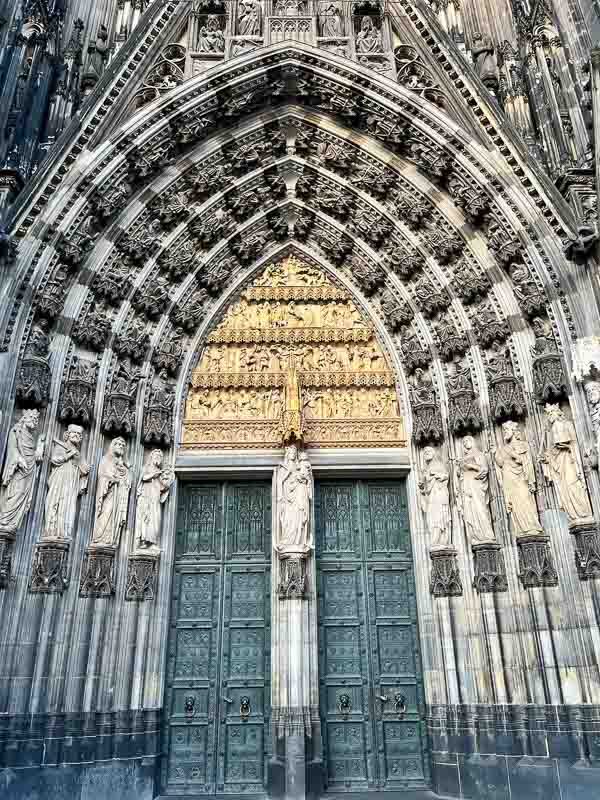
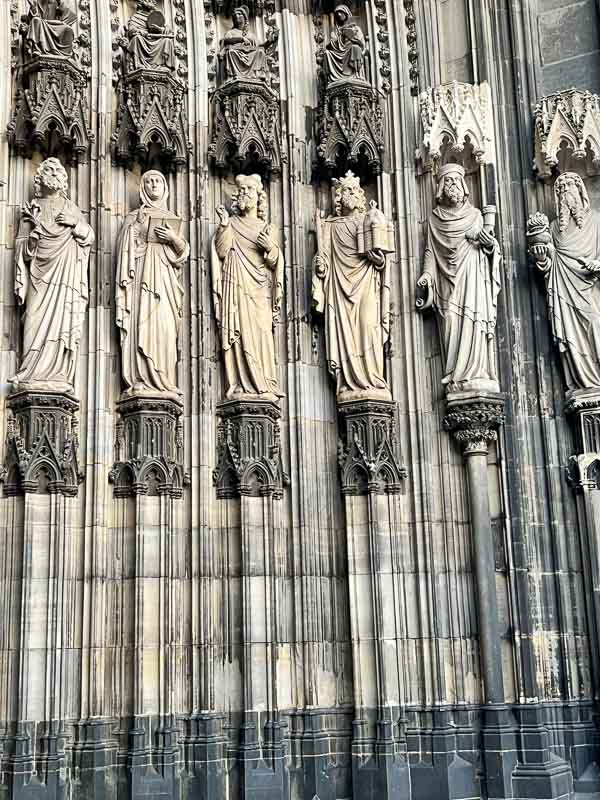
4. Kölner Dom has its own cathedral cops
As you enter the cathedral, you will notice some men dressed in vibrant red robes. These are the Domschweizer, the equivalent of the Swiss Guard at The Vatican.
As well as acting as wardrobe police and shooing tourists out when services are about to begin, they can give advice and directions.
5. Cologne Cathedral is home to the Gero-Crucifix
To the left of the choir is the Chapel of the Cross, which houses the oldest surviving monumental crucifix north of the Alps.
Carved in the 970s, the Gero-Crucifix is an unusual rendering of Jesus on the cross. He is not depicted as triumphant or suffering. Instead, he is shown after his death, eyes closed. It’s the perfect marriage of sublime art and powerful theology.
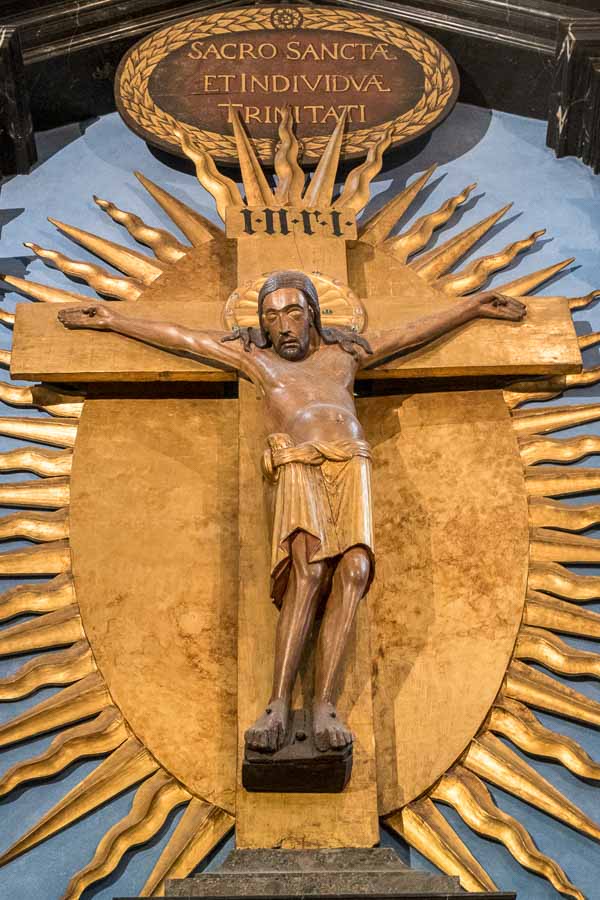
6. It is the final resting place of the Three Wise Men
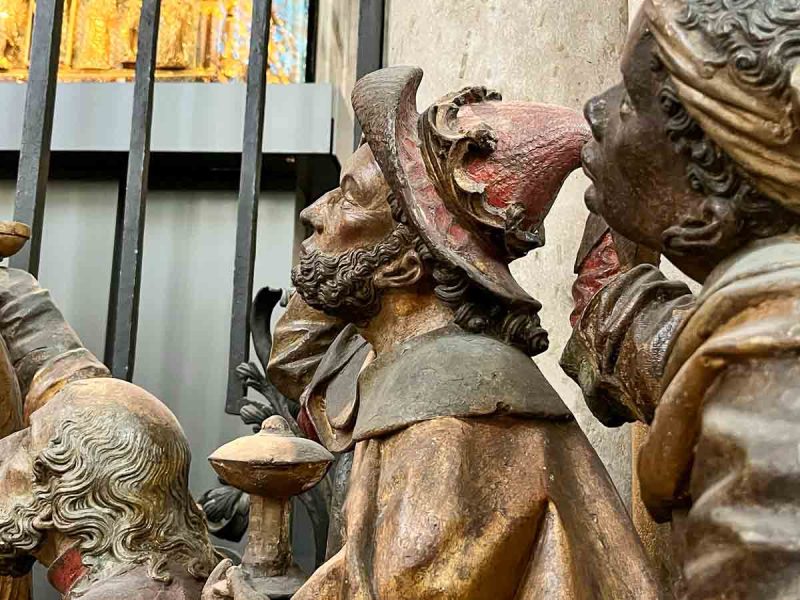
The mortal remains of the Magi drew pilgrims to Cologne from near and far, attracting funds to build the cathedral. Relics were huge in the Middle Ages.
In the 12th Century, Frederick Barbarossa brought back the bones of the Three Kings from the conquered City of Milan and gave them to the Archbishop of Cologne, Rainald von Dassel.
They are housed in the Shrine of the Three Magi, a gilt-encased reliquary studded with jewels and enamel. Designed by Nicholas of Verdun (1130 – 1205), this is thought to be the largest and most lavish reliquary in the Western world.
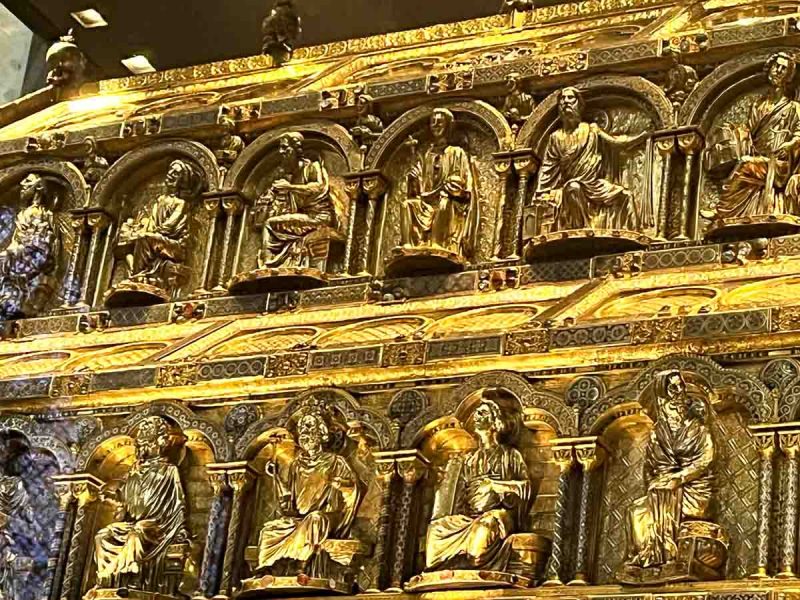
7. You can see the exquisite Madonna of Milan
The Shrine of the Magi is not the only show in town. The Madonna of Milan has also been attracting pilgrims for centuries.
Carved in the cathedral workshop sometime in the 1280s, this painted wooden sculpture is said to have miraculous powers.
8. There are wonderful stained glass windows
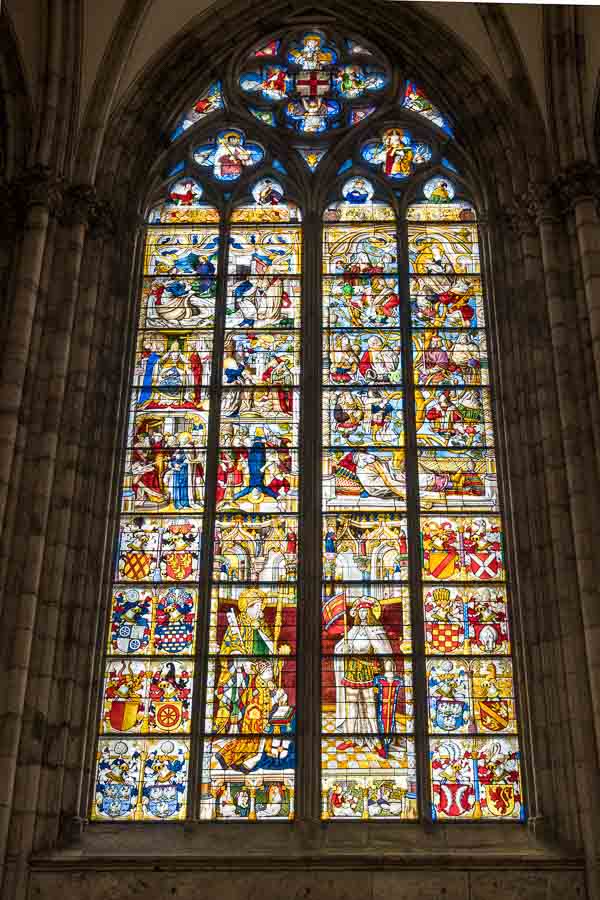
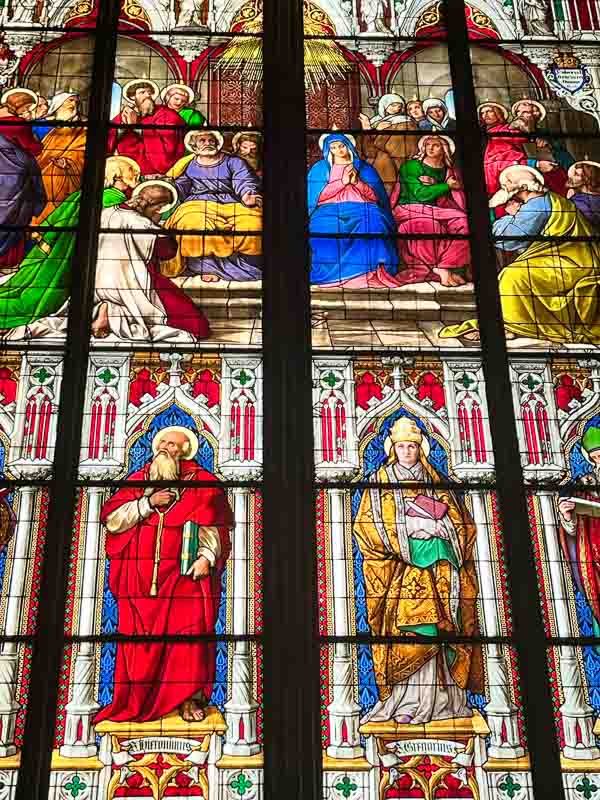
Cologne Cathedral’s stained glass windows are of different vintages but are all awe-inspiring.
At the east end of the cathedral in and above the chapels, you are looking at medieval glass. The windows along the nave are not as old.
The windows on the left-hand side with the coats of arms of the cathedral’s donors are early Renaissance.
On the right side of the nave, the glass is from the 19th Century. It was a gift from Ludwig I, the grandfather of the more famous “Mad” King Ludwig who had a penchant for whimsical castles. These include Schloss Neuschwanstein, one of Europe’s most famous palaces.
9. You can climb the tower of Cologne Cathedral for city views
Are you feeling energetic? If so, climb 533 steps to the observation deck at the summit of the cathedral’s South Tower.
A small fee applies and there is information on opening hours and ticket price here.
Cologne Cathedral Treasury’s ecclesiastical gems are also yours to view for a fee. A combined ticket with the tower will save you money if you want to visit both.
10. Cologne Cathedral is immense
Let’s finish with key Cologne Cathedral facts and figures.
With a floor space just shy of 8,000 square meters, Kölner Dom is one of the largest cathedrals in the world. Its limestone high altar is thought to be the largest in the world. The South Tower houses the largest swinging bell in the world, Saint Peter’s Bell.
If that’s not enough, this is the tallest twin-spired church in the world and is the second-tallest cathedral in Europe (it’s trumped by Lincoln Cathedral in England).
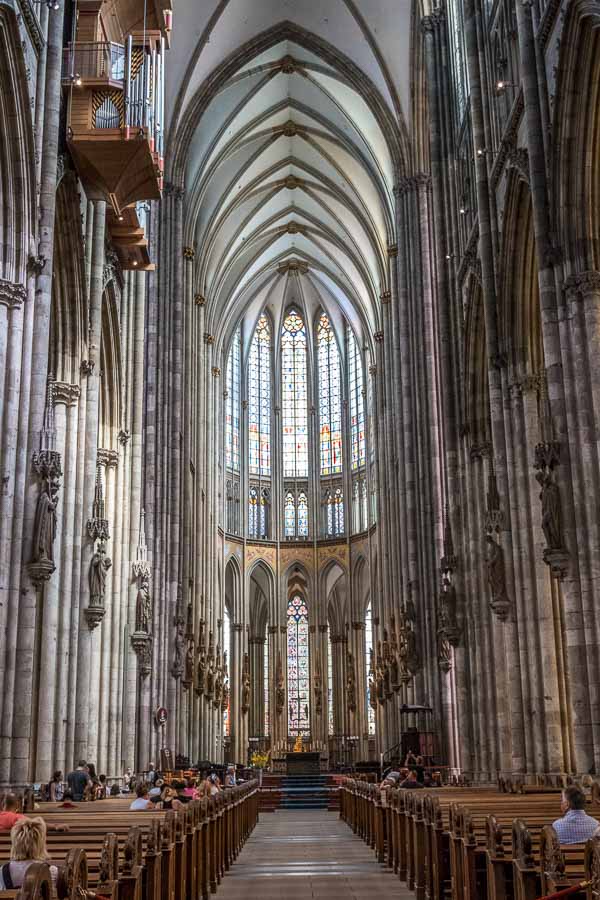
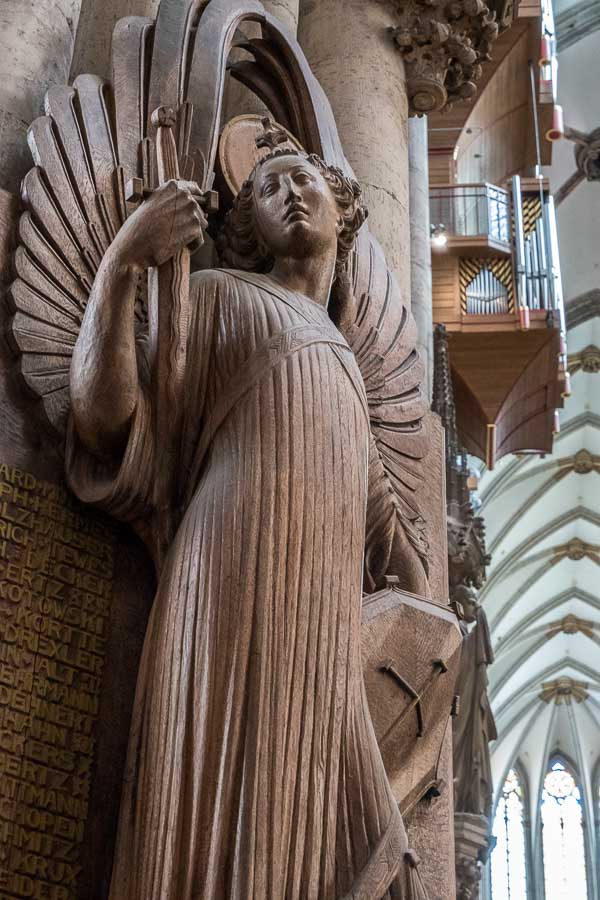
Visiting Cologne Cathedral: Practical Information
The address of Cologne Cathedral is Domkloster 4, 50667 Köln. It is opposite Cologne’s main train station. Check current opening times here.
It is free to visit. You will have to pay a small fee to visit the tower and treasury.
The Cathedral offers 45-minute guided tours in English. Buy your ticket at the DOMFORUM opposite the cathedral.
READ THIS NEXT: One Day in Cologne Old Town

About Bridget
Bridget Coleman has been a passionate traveller for more than 30 years. She has visited 70+ countries, most as a solo traveller.
Articles on this site reflect her first-hand experiences.
To get in touch, email her at hello@theflashpacker.net or follow her on social media.
